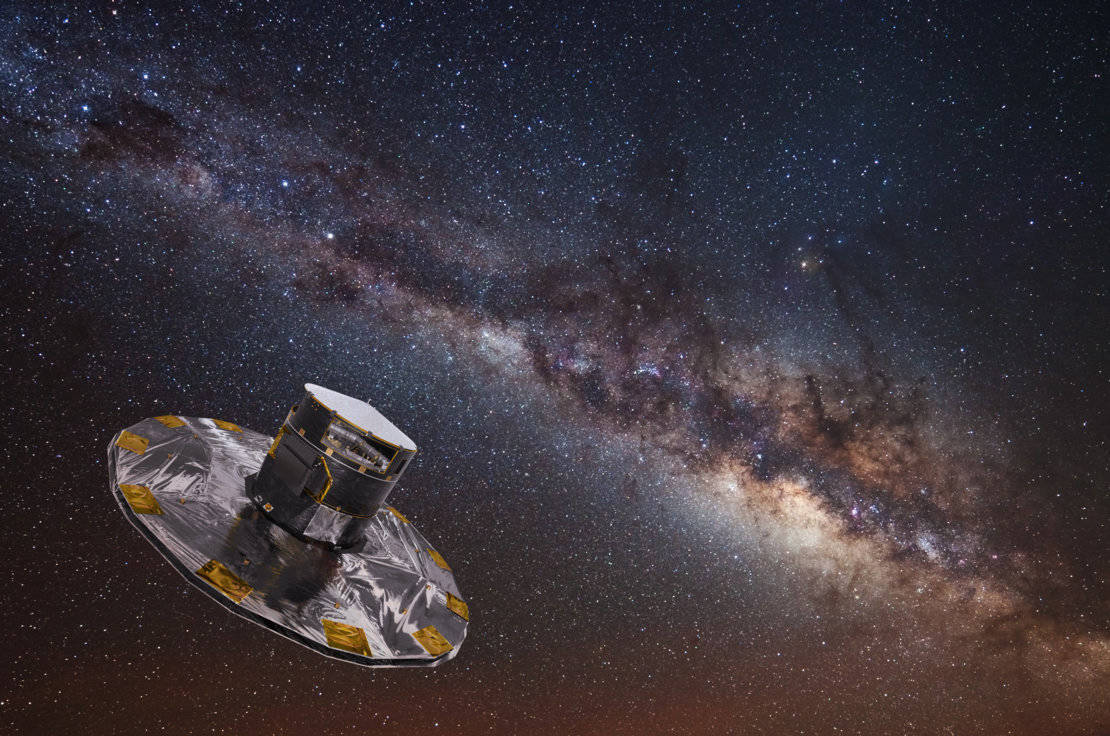
The last commands have been sent to the ESA's Gaia satellite and, after a dozen years scanning the galaxy, the spacecraft is shutting down its computers and boosting out into a retirement orbit around the Sun. This has proven to be a hard job. Gaia, launched on December 19, 2013, was deliberately designed to be resilient and have multiple backup computer systems that could reboot the satellite in the event of radiation storms and micrometeorite strikes (the latter of which happened last year), and the boffins at Europe's space agency don't want Gaia to reboot.
"Switching off a spacecraft at the end of its mission sounds like a simple enough job," commented Gaia spacecraft operator Tiago Nogueira. "But spacecraft really don't want to be switched off." "We had to design a decommissioning strategy that involved systematically picking apart and disabling the layers of redundancy that have safeguarded Gaia for so long, because we don't want it to reactivate in the future and begin transmitting again if its solar panels find sunlight.

" As part of the shutdown process, the Gaia team is rewriting sections of the hard drive with the names of more than 1,500 people who have worked on the project. This will break key software, and to add to that some members of the team have uploaded messages that will also overwrite software, and these will last as long as the spacecraft does. "Today, I was in charge of corrupting Gaia's processor modules to make sure that the onboard software will never restart again once we have switched off the spacecraft," says Spacecraft Operations Engineer, Julia Fortuno.
"I have mixed feelings between the excitement for these important end-of-life operations and the sadness of saying goodbye to a spacecraft I have worked on for more than five years. I am very happy to have been part of this incredible mission." Gaia is designed to map out the Milky Way in three dimensions, logging out the position, movements and distance of stars, planets, and comets in our Milky Way and beyond.
It does this by photographing objects repeatedly over a five year period. The resultant 200 TB of data is then analyzed on Earth to map out the skies after being compressed and transmitted at 3 Mbit/s. To date, Gaia has mapped upwards of two billion stars after making three trillion observations and made some significant discoveries – not least that our galaxy is wobbling slightly, probably after an earlier collision with another galaxy.
Given we're on course to collide with the Andromeda galaxy in about 4.5 billion years' time, that wobble could get worse. It also gave us a much better idea of where the Solar System is in the galactic disc and calculated that we're moving closer and closer to the Milky Way's heart at a speed of around 0.
23 nanometers/s 2 . In addition, it found the closest black hole to Earth – the aptly named Gaia BH1 - which is about 1,600 light-years away. "Gaia's extensive data releases are a unique treasure trove for astrophysical research, and influence almost all disciplines in astronomy," said Gaia project scientist Johannes Sahlmann.
The mapping data sent back from Gaia was used to inform future astronomy missions and a successor to Gaia has already been proposed. GaiaNIR (Gaia Near Infra-Red) is designed to perform the same mapping but at different wavelengths, although the imaging hardware to do this isn't quite finished yet. Over the last few weeks ground control has tested out systems, including propulsion, to see how well they have lasted over a dozen years of service.
On Thursday the engines were used one last time to move the spacecraft closer to the Sun and Gaia is now in a safe parking orbit 6.2 million miles (10 million kilometers) from Earth and ensuring it poses no danger of hitting us for at least a century. Then, one by one, the ESA team began shutting down components and corrupting the software that could have restarted them.
The communication subsystem and the central computer were the last to be shut down and now Gaia is no longer operational, although the data still on its hard drives will serve as a time capsule should humanity decide to retrieve it at some point in the future if the capability exists. "We will never forget Gaia, and Gaia will never forget us," observed Gaia mission manager Uwe Lammers. ®.














